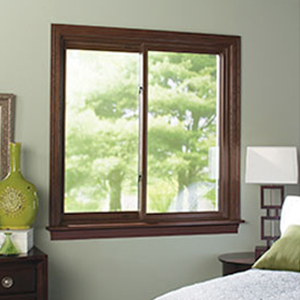Condensation is a sure sign that your home windows should be changed.
Windows are an essential barrier between the harsh, variable weather conditions outside as well as our calm, consistent residence temperature levels. Home replacement windows quite often have a fifteen to twenty-year life expectancy, so fortunately we do not need to consider changing them frequently. But knowing when it's time to replace them can be complicated. You might be tempted to try and hold out for another season if you recognize the warning signs. However replacing your windows currently can aid you expand the life of your entire house and maintain you as well as your family cozy all wintertime long. Here are a couple of indicators that your home windows are not all set for the severe winter season this year.
Drafty Residence
As home windows age, they start shrinking, breaking, as well as not shutting correctly, permitting air from inside your house to flow out. As a result of this, your HVAC system has a hard time to maintain your house at a consistent temperature and also sends your energy expenses increasing. If your home is visibly more drafty or your electrical bills seem to be rising this fall for no obvious factor, you may wish to have your home windows had a look at.
Tough to Lock
We enjoy having our windows open when the weather condition behaves, but they shouldn't be open all the moment. Throughout the winter and when we're not home, your home windows need to be shut in area and also locked. Windows with malfunctioning locks is a major safety and security danger that need to be corrected as soon as possible to keep your family secure. Commonly the lock can be repaired cheaply, yet if the window is having trouble staying open or shut or is leaking air, it may be best to simply install a new one.
Condensation Forming
The most significant indication that you need new windows is when condensation starts to form on the within your home window when it is closed and also secured. This is a sign of a likely permanent problem as well as must be attended to as soon as possible to stop the prospective development of mold in the structure, which could infect other areas of your home and create significant damages when left neglected.
Have you practically had it with your old, breezy home windows?
Is this the year you've determined to ultimately change your home windows? Replacing your home windows with new ones includes lots of advantages, including a power effectiveness increase, far better ventilation, as well as better high quality of light in your home. The National Window Score Council certifies as well as labels home windows (in addition to doors and skylights) on their performance and also energy efficiency. When you're buying new windows you'll see these ratings on the NFRC tag. In this week's blog, we'll talk about how you can read this label making certain you're making an informed decision on your brand-new windows.
Warmth Gain and Loss
The initial three residential or commercial properties on the tag pertain to exactly how the window does when it come to warm gain and also loss. Windows gain and lose heat in three methods:
Direct transmission via the glass.
Radiation of heat from the sunlight right into your house, as well as outdoors from objects in your home.
Air leak through and around the home window.
U-factor
This is "The rate at which a window, door, or skylight conducts non-solar warm circulation." The takeaway here is "The lower the U-factor, the a lot more energy-efficient the window, door, or skylight."

Solar Heat Gain Coefficient
The SHGC tells us how much radiation is admitted through the home window and also launched as warmth in the residence. The reduced the number, the much less warm is sent. Nonetheless, this does not necessarily imply you want a low SHGC. For example, since a greater SGHC suggests the home window permits a lot more warm in, you can allow extra solar warm inside in the winter months, which might minimize your heating Buresh requirements. In this case, the environment you reside in will play a significant consider selecting an SHGC rating.
Air Leak
This evaluates what does it cost? air the home window allows about a certain pressure distinction throughout it. The lower the rating, the much less air leakage.
Sunshine Passage
The next 2 ratings gauge just how much light a window allows into your residence.
Visible Transmittance (VT).
This number between 0 and 1 actions what portion of the spectrum of noticeable light the window lets through. The greater the fraction, the a lot more light the home window will certainly enable. If you want to employ daylighting in your home, you'll want a greater portion. If you want to lower indoor glare, you could want a lower portion.
Light-to-Solar Gain.
This number is the ratio between the SHGC as well as the VT. "The greater the number, the extra light transmitted without including too much quantities of warmth.".